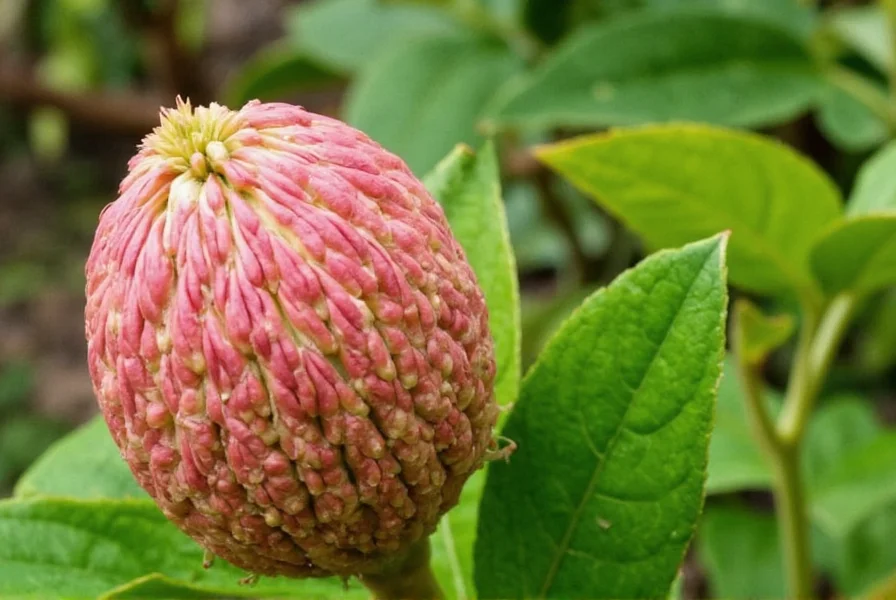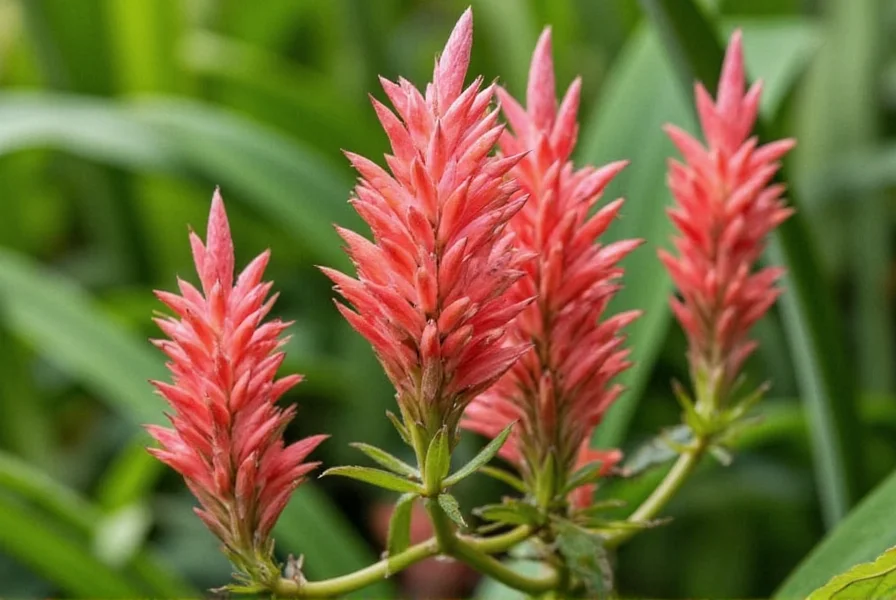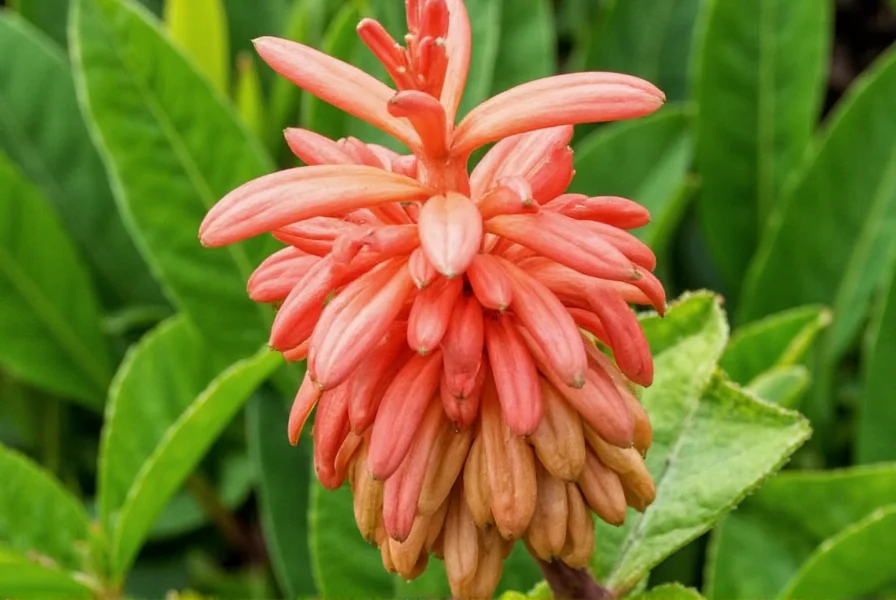Only certain ginger varieties produce flowers. Common blooming types include Hedychium (butterfly ginger), Alpinia (shell ginger), and Curcuma (turmeric). Most culinary ginger (Zingiber officinale) rarely blooms indoors but may flower in tropical climates with proper care. Blooming typically occurs in summer when plants receive 6-8 hours of filtered sunlight, consistent moisture, and warm temperatures above 75°F (24°C).
Understanding which ginger plants produce flowers and how to encourage blooming transforms your gardening experience. While many people grow ginger primarily for its culinary rhizomes, ornamental varieties offer stunning floral displays that enhance any garden. This comprehensive guide explores the fascinating world of flowering ginger plants, providing science-based information to help you cultivate these tropical beauties.
Types of Ginger Plants That Bloom
Ginger belongs to the Zingiberaceae family, which contains over 1,300 species across 52 genera. Not all produce showy flowers, but several popular varieties are prized specifically for their blooms:
| Ginger Type | Scientific Name | Flowering Characteristics | Hardiness Zone |
|---|---|---|---|
| Butterfly Ginger | Hedychium coronarium | Fragrant white flowers resembling butterflies; blooms late summer | 8-11 |
| Shell Ginger | Alpinia speciosa | Pink shell-shaped flowers; blooms spring through summer | 9-11 |
| Turmeric | Curcuma longa | White or yellow flowers with pink bracts; blooms summer | 8-11 |
| Culinary Ginger | Zingiber officinale | Rarely blooms outside tropical habitats; yellow-green flowers | 9-12 |

Why Your Ginger Plant Might Not Be Blooming
Many gardeners wonder why isn't my ginger plant flowering when they expect blooms. Several factors influence flowering success:
Light Requirements
Ginger plants need 6-8 hours of filtered sunlight daily to produce flowers. Direct afternoon sun can scorch leaves, while insufficient light prevents blooming. In temperate regions, grow ginger in partial shade with morning sun. Indoor growers should position plants near east-facing windows or provide 12-14 hours of full-spectrum lighting.
Temperature and Humidity
As tropical plants, gingers require warm temperatures between 75-85°F (24-29°C) for optimal flowering. Temperatures below 60°F (15°C) induce dormancy. Maintain humidity above 50%—mist plants regularly or use a pebble tray. During winter, protect outdoor plants from frost by mulching heavily or bringing containers indoors.
Soil and Watering Practices
Well-draining, organically rich soil with a pH of 6.0-6.8 supports healthy flowering. Keep soil consistently moist but not waterlogged—overwatering prevents ginger from blooming by causing rhizome rot. During active growth (spring through fall), water when the top inch of soil feels dry. Reduce watering in winter when plants enter dormancy.
Encouraging Blooms in Your Ginger Plants
Follow these science-backed practices to maximize your chances of seeing ginger plant flowering season success:
Proper Fertilization Schedule
Feed monthly during the growing season with a balanced 10-10-10 fertilizer or one higher in phosphorus (5-10-5) to encourage blooming. Organic options like compost tea or fish emulsion provide steady nutrition without burning delicate roots. Stop fertilizing 6-8 weeks before expected first frost to allow natural dormancy.
Container vs. Ground Planting
Container growing offers advantages for how to get ginger plant to bloom in non-tropical climates. Potted plants can be moved to optimal light conditions and brought indoors before cold weather. Use containers at least 12 inches deep with drainage holes. Ground-planted ginger in suitable hardiness zones often produces more vigorous blooms but requires winter protection in marginal climates.
Pruning and Maintenance
Remove spent flower stalks to redirect energy into new blooms. Trim yellowing leaves at the base to maintain plant health. Every 2-3 years, divide overcrowded rhizomes in early spring to rejuvenate plants and improve flowering potential. When dividing, ensure each section has at least one growing eye and several roots.

Common Misconceptions About Blooming Ginger
Many gardeners confuse edible ginger vs flowering ginger varieties. While Zingiber officinale (culinary ginger) can bloom, it rarely does outside its native tropical habitat. Ornamental varieties like Hedychium and Alpinia produce more reliable, showy flowers but their rhizomes aren't typically used in cooking. Turmeric (Curcuma longa) offers both culinary value and attractive blooms.
Another misconception involves blooming frequency. Most ginger varieties flower annually during their active growing season, not continuously throughout the year. Understanding your specific variety's ginger plant flowering season prevents unnecessary concern when plants aren't blooming during dormant periods.
Benefits of Growing Flowering Ginger Varieties
Beyond their visual appeal, blooming ginger plants offer several advantages:
- Natural pest repellent properties (butterfly ginger deters mosquitoes)
- Attract pollinators like bees and hummingbirds
- Some varieties provide edible rhizomes alongside ornamental value
- Medicinal properties in certain species (like turmeric's curcumin)
- Year-round interest with dramatic foliage even when not flowering
Troubleshooting Flowering Problems
When your ginger isn't blooming as expected, consider these solutions:
Yellowing Leaves Without Blooms
This often indicates overwatering or poor drainage. Allow soil to dry slightly between waterings and ensure containers have adequate drainage. Check for root rot—healthy roots should be firm and white, not mushy and brown.
Leggy Growth With Few Flowers
Insufficient light causes weak, stretched growth. Gradually move plants to brighter locations over 7-10 days to prevent sun shock. For indoor plants, consider supplemental lighting during winter months.
Dropping Buds Before Opening
Sudden temperature changes or inconsistent watering often cause bud drop. Maintain stable conditions and water consistently. High humidity levels (above 60%) help prevent this issue.
Frequently Asked Questions
Do all ginger plants produce flowers?
No, not all ginger plants produce flowers. Culinary ginger (Zingiber officinale) rarely blooms outside tropical climates, while ornamental varieties like butterfly ginger (Hedychium) and shell ginger (Alpinia) are specifically grown for their showy flowers.
How long does it take for ginger to bloom after planting?
Most ginger varieties take 8-10 months to mature and produce flowers after planting rhizomes. Some may take up to 12-18 months, especially when grown outside their ideal hardiness zones. Proper care and optimal growing conditions can encourage earlier blooming.
Can I grow blooming ginger indoors successfully?
Yes, you can grow blooming ginger indoors with proper conditions. Provide bright, indirect light (east-facing window or grow lights), maintain temperatures above 75°F (24°C), keep humidity above 50%, and water consistently. Butterfly ginger and some Alpinia varieties adapt best to indoor growing for flowering.
Does flowering affect the quality of edible ginger rhizomes?
Flowering typically doesn't negatively impact edible ginger rhizome quality, but it may slightly reduce rhizome size as energy goes toward flower production. For maximum rhizome harvest, some growers remove flower stalks from culinary ginger varieties, though this isn't necessary for ornamental types grown primarily for flowers.











 浙公网安备
33010002000092号
浙公网安备
33010002000092号 浙B2-20120091-4
浙B2-20120091-4